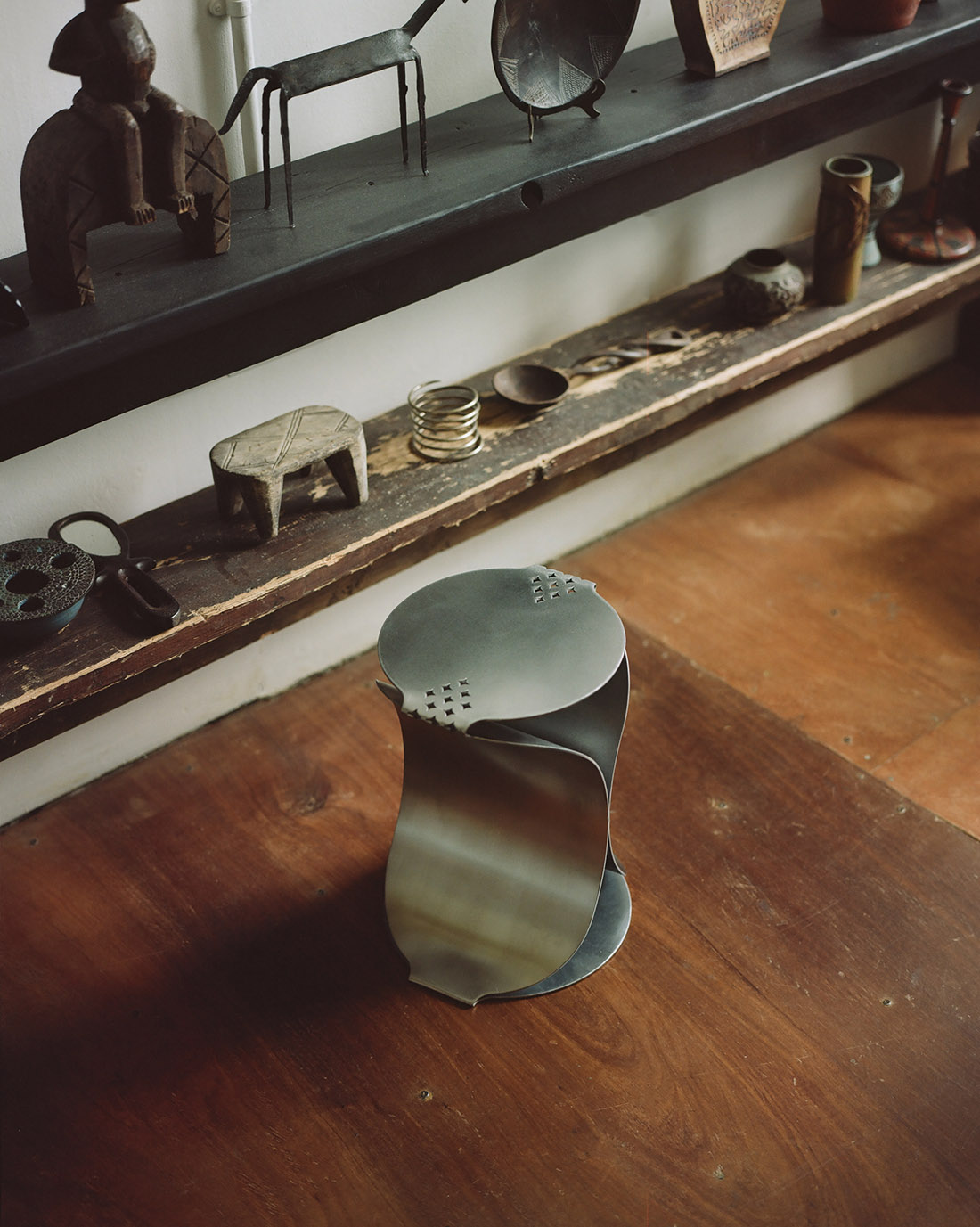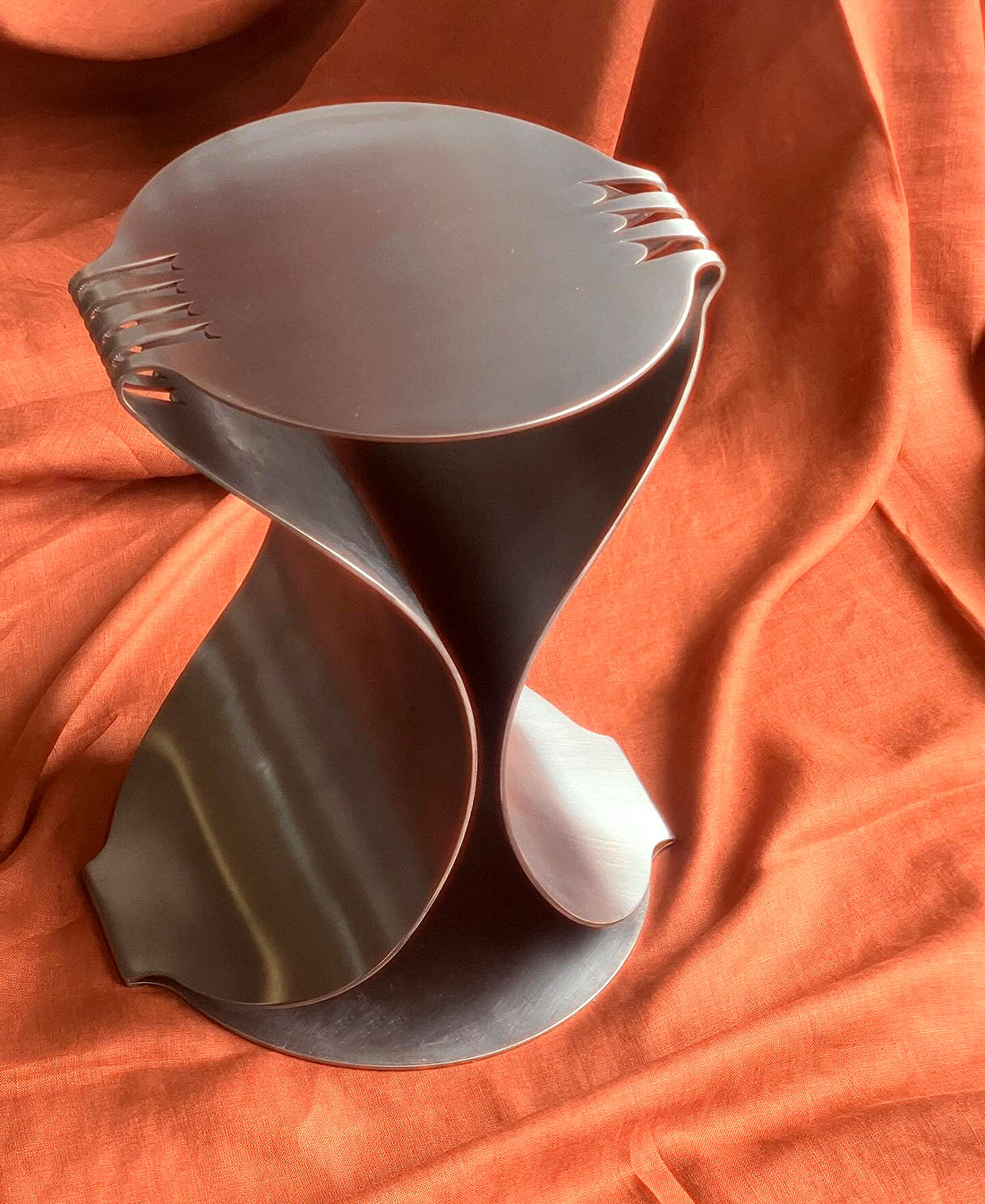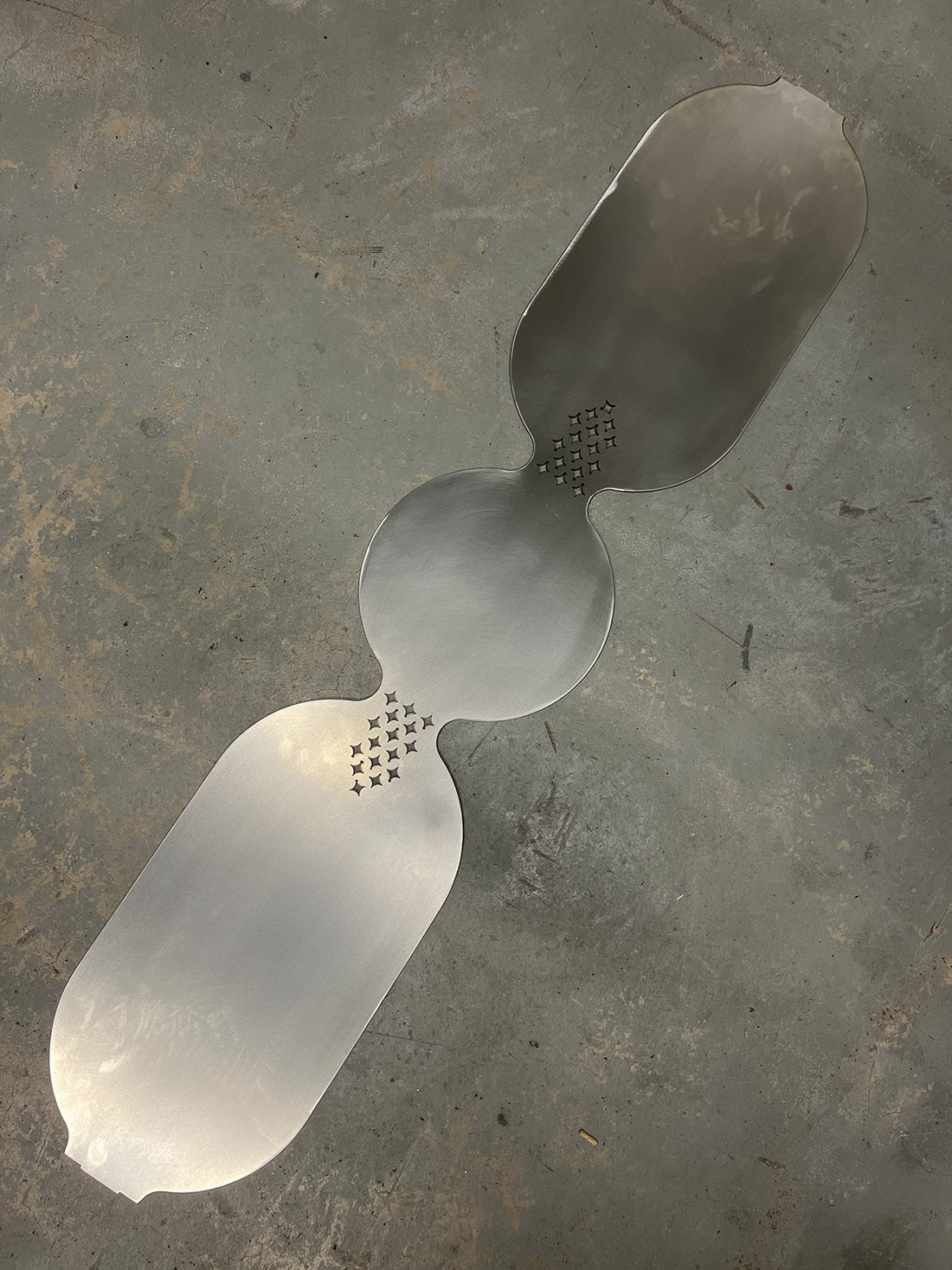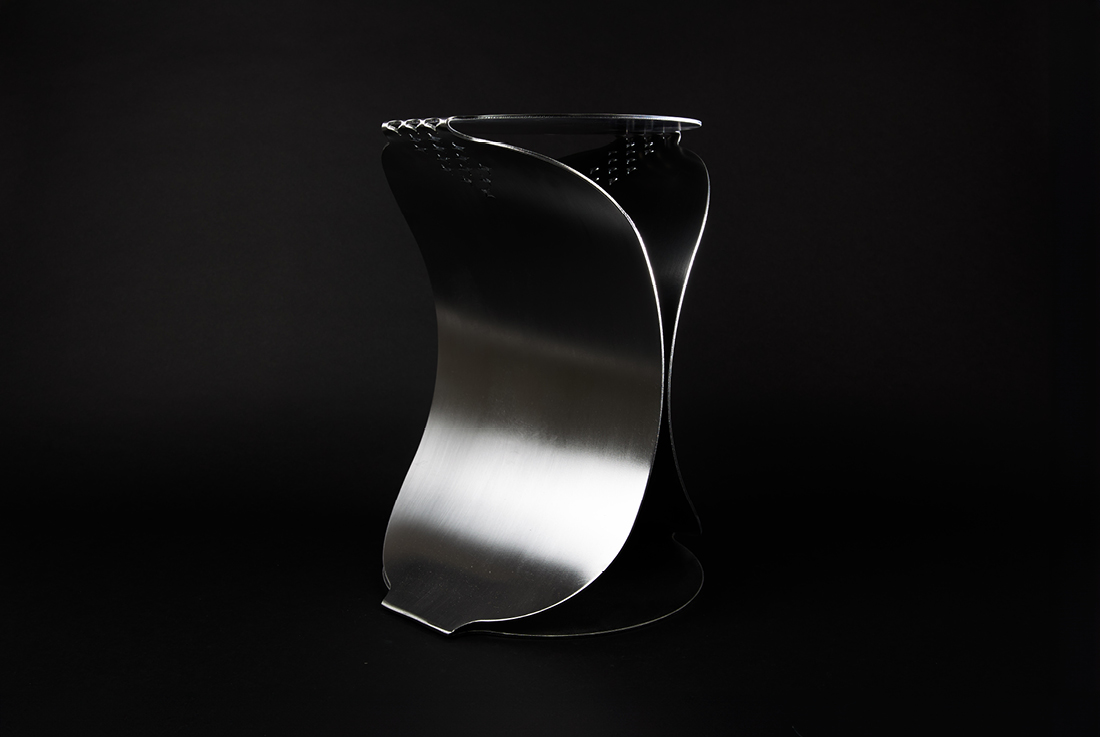Modernist architect Adolf Loos, in his 1910 lecture Ornament and Crime, argued that cultural evolution is marked by the removal of ornamentation from everyday objects. While Loos’s argument was grounded in the logic of intellectual progress, it may overlook the potential contributions and meanings from cultures where ornamentation is deeply intentional and layered.
The IO stool challenges this notion by reinterpreting ornamentation within the context of modern, machine-made objects. It draws inspiration from the Igbo-Nigerian Uli graphical language, integrating its motifs directly into the stool’s design, material manipulation, and negative spaces.
The stool’s curves and gaps are inspired by the Uli motif isi nwoji (or isi oji) and reflect the negative shape of a kola nut segment, a significant element in Igbo culture. The design incorporates cut-out Uli patterns that not only aid the bending process but also serve as a functional ornament. Additionally, the steel cutouts and stencils from production can be repurposed as mark-making tools for fabric, symbolically returning to two-dimensional art.
The IO stool represents a fusion of tradition and innovation, engaging in a dialogue between culture, aesthetics, and craftsmanship. It is more than a piece of furniture; it is a reflection on the intersection of heritage and modern design.






Credits
Design
Homenkà Design; Zoë Chinonso Ene, United Kingdom
Year of production
2024
Photos
Christian Cassiel







